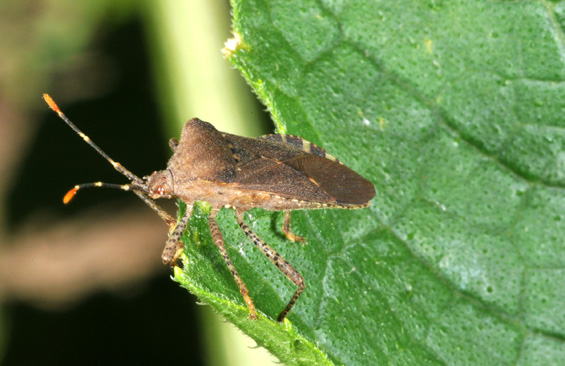
Common Name: Squash bug
Scientific Name: Hemiptera: Anasa tristis
Status: A pest of vegetable crops
Damaging Stage: Adult and nymph
Biology: Adults are rather large (5/8-inch long), winged, brown-black, flat-backed insects and give off a disagreeable odor when crushed. Newly-emerged nymphs have a light green-colored abdomen with black heads and legs. As they mature, the abdomen turns a brownish-gray. They are approximately 1/10-1/2 inches long. The final two instars have noticeable wing pads.
Adults overwinter in the shelter of dead leaves, vines, boards, or buildings. They emerge in the spring to lay masses of eggs on the undersides of leaves. The eggs hatch within ten days and the nymphs pass through five instars in one month. Only one generation develops each year and new adults do not mate until the following spring.
Injury: Squash bug adults and nymphs attack all cucurbit vine crops but particularly squash, pumpkin, cucumber and melon. The nymphs pierce vines with needle-like mouthparts. They inject a toxic substance into the plant. Disease can cause the plant to yellow, wilt and die.
Action Threshold: Disease spread by squash bugs can result in severe yield loss. If, early in the growing season, plants are wilting, chemical control of squash bugs is required. However, squash bug populations rarely require chemical control methods.
Management: Adults and nymphs can be knocked off plants into buckets of soapy water during a light infestation. Insecticides are usually not required for squash bug populations.
|